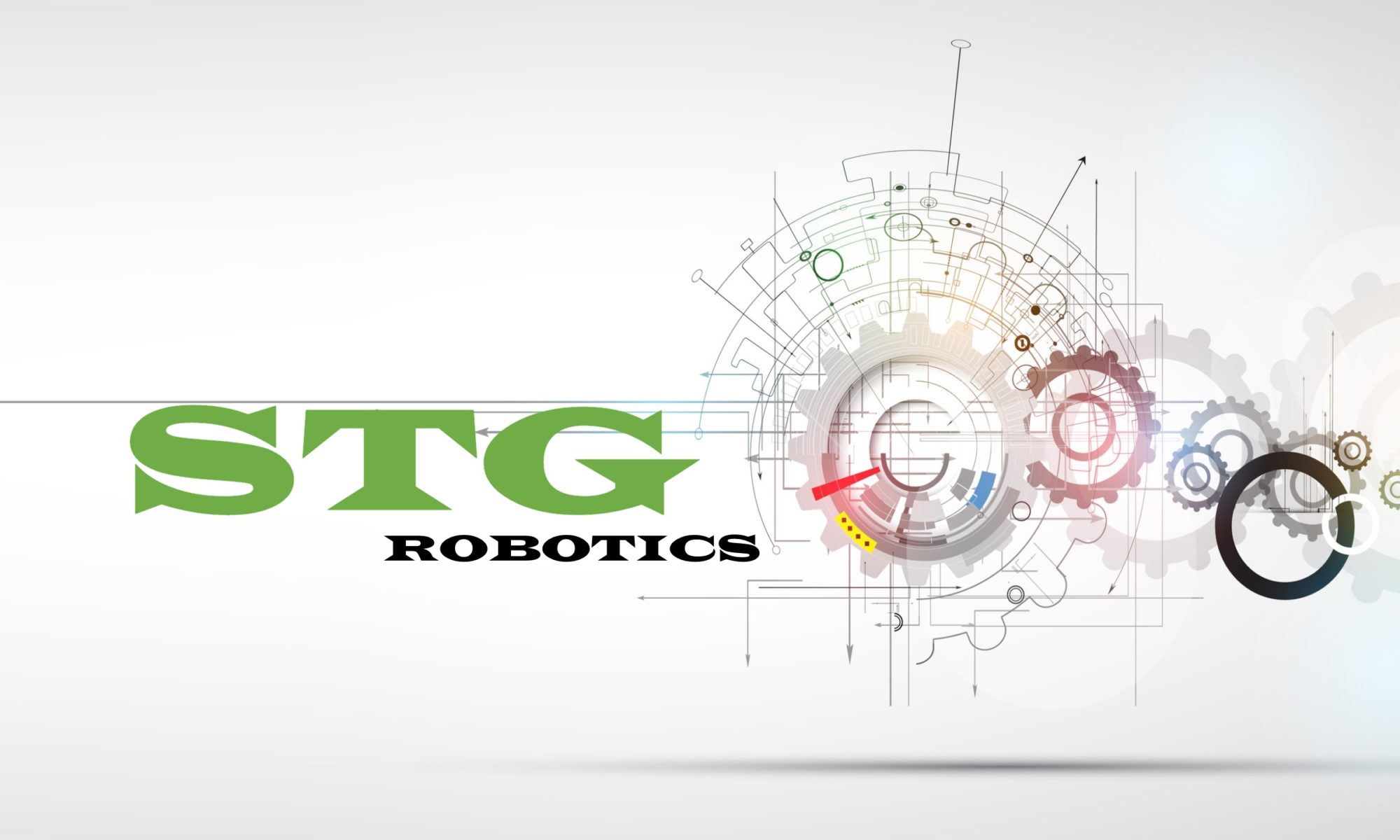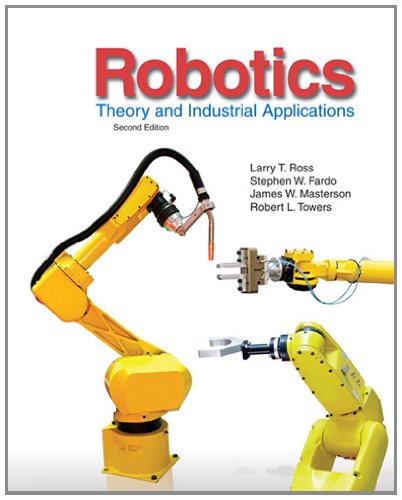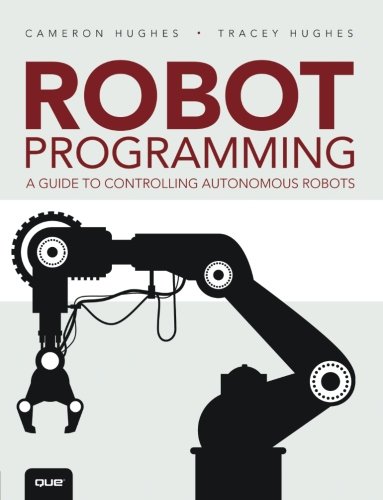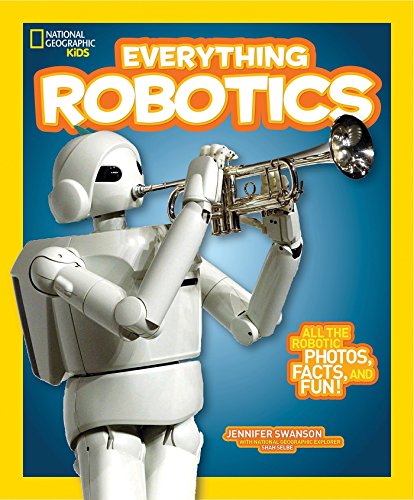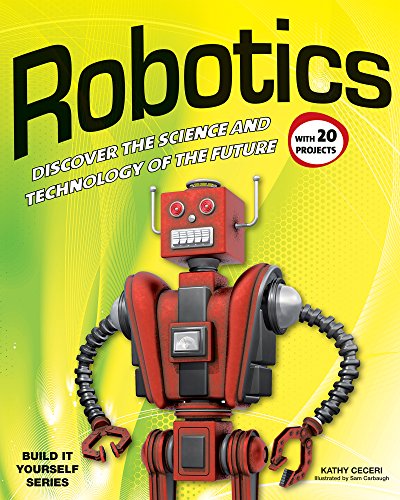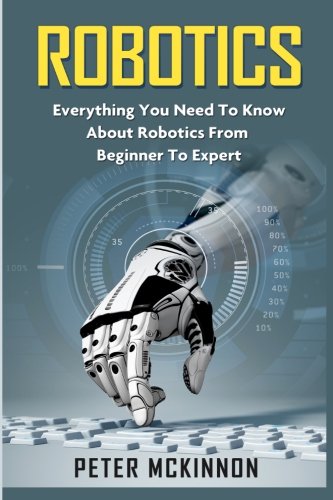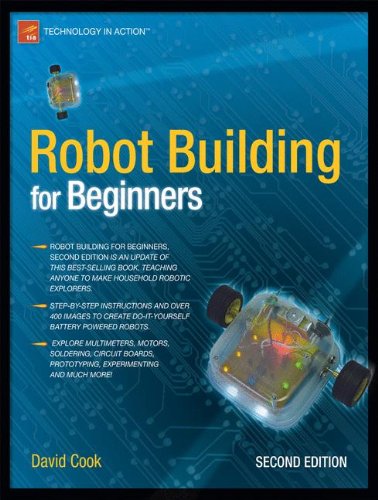Robot Programming: A Guide to Controlling Autonomous Robots
Start programming robots NOW!
Learn hands-on, through easy examples, visuals, and code
This is a unique introduction to programming robots to execute tasks autonomously. Drawing on years of experience in artificial intelligence and robot programming, Cameron and Tracey Hughes introduce the reader to basic concepts of programming robots to execute tasks without the use of remote controls.
Robot Programming: A Guide to Controlling Autonomous Robots takes the reader on an adventure through the eyes of Midamba, a lad who has been stranded on a desert island and must find a way to program robots to help him escape. In this guide, you are presented with practical approaches and techniques to program robot sensors, motors, and translate your ideas into tasks a robot can execute autonomously. These techniques can be used on today’s leading robot microcontrollers (ARM9 and ARM7) and robot platforms (including the wildly popular low-cost Arduino platforms, LEGO® Mindstorms EV3, NXT, and Wowee RS Media Robot) for your hardware/Maker/DIY projects. Along the way the reader will learn how to:
-
Program robot sensors and motors
-
Program a robot arm to perform a task
-
Describe the robot’s tasks and environments in a way that a robot can process using robot S.T.O.R.I.E.S.
-
Develop a R.S.V.P. (Robot Scenario Visual Planning) used for designing the robot’s tasks in an environment
-
Program a robot to deal with the “unexpected” using robot S.P.A.C.E.S.
-
Program robots safely using S.A.R.A.A. (Safe Autonomous Robot Application Architecture) Approach
-
Program robots using Arduino C/C++ and Java languages
-
Use robot programming techniques with LEGO® Mindstorms EV3, Arduino, and other ARM7 and ARM9-based robots.
National Geographic Kids Everything Robotics: All the Photos, Facts, and Fun to Make You Race for Robots
They fix spacecraft, dance, tell jokes, and even clean your carpet! From the tiniest robo-bees to gigantic factory machines, robotics is all around you. This technology isn’t just for science-fiction anymore — it’s real and more relevant than ever. With stunning visuals and energetic, impactful design, readers won’t stop until they’ve learned everything there is to know about robotics.
Robotics: DISCOVER THE SCIENCE AND TECHNOLOGY OF THE FUTURE with 20 PROJECTS (Build It Yourself)
Named to the 2012 Chicago Public Library’s “Best of the Best” Reading List for Informational Books for Older Readers, Robotics: Discover the Science and Technology of the Future is a fun and educational introduction to the exciting field of designing, building, and operating robots. Along with background material and clear explanations of how robots work, Robotics features step-by-step instructions for building real robot models using ordinary craft materials and parts salvaged from recycled toys and other household devices.
Budding roboticists will learn how to create working robot hands, hydraulic arms, sensors, solar-powered robots, light-seeking robots and more. A great way to get kids interested in STEM subjects (science, technology, engineering, and math), the activities encourage kids to use all their talents to come up with creative solutions to tricky problems and figure out how things work.
Robotics: Everything You Need to Know About Robotics from Beginner to Expert
Explore the Fascinating World of Robotics! Do you love robots? Are you fascinated with modern advances in technology? Do you want to know how robots work? If so, you’ll be delighted with Robotics: Everything You Need to Know About Robotics from Beginner to Expert. You’ll learn the history of robotics, learn the 3 Rules, and meet the very first robots. This book also describes the many essential hardware components of today’s robots: – Analog and Digital brains – DC, Servo, and Stepper Motors – Bump Sensors and Light Sensors – and even Robotic Bodywork Would you like to build and program your own robot? You can use Robotics: Everything You Need to Know About Robotics from Beginner to Expert to learn the software basics of RoboCORE and how to create “brains” for creations like the Obstacle Avoiding Robot. You’ll also learn which materials to use to build your robot body and which sensors you need to help your new friend perceive the world around it. This book even explains how you can construct an Autonomous Wall Climbing Robot! Don’t delay – Start Reading Robotics: Everything You Need to Know About Robotics from Beginner to Expert right away! You’ll be so glad you gained this exciting and powerful knowledge!
Robot Building for Beginners, 2nd Edition (Technology in Action)
“I wrote this book because I love building robots. I want you to love building robots, too. It took me a while to learn about many of the tools and parts in amateur robotics. Perhaps by writing about my experiences, I can give you a head start.” ―David Cook
Robot Building for Beginners, Second Edition is an update of David Cook’s best-selling Robot Building for Beginners. This book continues its aim at teenagers and adults who have an avid interest in science and dream of building household explorers. No formal engineering education is assumed.
The robot described and built in this book is battery powered and about the size of a lunchbox. It is autonomous. That is, it isn’t remote controlled.
You’ll begin with some tools of the trade, and then work your way through prototyping, robot bodybuilding, and eventually soldering your own circuit boards. By the book’s end, you will have a solid amateur base of understanding so that you can begin creating your own robots to vacuum your house or maybe even rule the world!
The Future is Hear Embrace Robotics.
What is Lorem Ipsum?
Lorem Ipsum is simply dummy text of the printing and typesetting industry. Lorem Ipsum has been the industry’s standard dummy text ever since the 1500s, when an unknown printer took a galley of type and scrambled it to make a type specimen book. It has survived not only five centuries, but also the leap into electronic typesetting, remaining essentially unchanged. It was popularised in the 1960s with the release of Letraset sheets containing Lorem Ipsum passages, and more recently with desktop publishing software like Aldus PageMaker including versions of Lorem Ipsum.
Why do we use it?
It is a long established fact that a reader will be distracted by the readable content of a page when looking at its layout. The point of using Lorem Ipsum is that it has a more-or-less normal distribution of letters, as opposed to using ‘Content here, content here’, making it look like readable English. Many desktop publishing packages and web page editors now use Lorem Ipsum as their default model text, and a search for ‘lorem ipsum’ will uncover many web sites still in their infancy. Various versions have evolved over the years, sometimes by accident, sometimes on purpose (injected humour and the like).
Where does it come from?
Contrary to popular belief, Lorem Ipsum is not simply random text. It has roots in a piece of classical Latin literature from 45 BC, making it over 2000 years old. Richard McClintock, a Latin professor at Hampden-Sydney College in Virginia, looked up one of the more obscure Latin words, consectetur, from a Lorem Ipsum passage, and going through the cites of the word in classical literature, discovered the undoubtable source. Lorem Ipsum comes from sections 1.10.32 and 1.10.33 of “de Finibus Bonorum et Malorum” (The Extremes of Good and Evil) by Cicero, written in 45 BC. This book is a treatise on the theory of ethics, very popular during the Renaissance. The first line of Lorem Ipsum, “Lorem ipsum dolor sit amet..”, comes from a line in section 1.10.32.
The standard chunk of Lorem Ipsum used since the 1500s is reproduced below for those interested. Sections 1.10.32 and 1.10.33 from “de Finibus Bonorum et Malorum” by Cicero are also reproduced in their exact original form, accompanied by English versions from the 1914 translation by H. Rackham.
Where can I get some?
There are many variations of passages of Lorem Ipsum available, but the majority have suffered alteration in some form, by injected humour, or randomised words which don’t look even slightly believable. If you are going to use a passage of Lorem Ipsum, you need to be sure there isn’t anything embarrassing hidden in the middle of text. All the Lorem Ipsum generators on the Internet tend to repeat predefined chunks as necessary, making this the first true generator on the Internet. It uses a dictionary of over 200 Latin words, combined with a handful of model sentence structures, to generate Lorem Ipsum which looks reasonable. The generated Lorem Ipsum is therefore always free from repetition, injected humour, or non-characteristic words etc.
